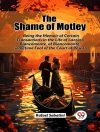In ‘The Purple Heights, ‘ Marie Conway Oemler intricately weaves a tale that explores themes of love, ambition, and the search for self-identity against the backdrop of the American wilderness. Oemler’s lyrical prose and vivid imagery evoke a strong sense of place, inviting readers into the lush landscapes and tumultuous emotions of her characters. The novel is marked by its psychological depth, as it delves into the inner lives of its protagonists, illustrating their struggles and triumphs with an authenticity that resonates deeply. Set in the early 20th century, the book reflects contemporary concerns of the era while infusing elements of romanticism and modernism, making it a rich textual experience that invites literary analysis and appreciation. Marie Conway Oemler, an accomplished American author, was known for her keen observations of human nature and her interest in the complexities of familial relationships. Growing up in a culturally rich environment and influenced by her own experiences as a daughter, sister, and mother, Oemler’s personal history is intricately linked to the themes explored in ‘The Purple Heights.’ Her background in literature and her exposure to the evolving role of women in society likely shaped her desire to portray strong, multifaceted characters in a rapidly changing world. I highly recommend ‘The Purple Heights’ to readers seeking a nuanced exploration of human emotion set against a beautifully rendered landscape. Oemler’s ability to capture the essence of her characters while addressing broader societal themes positions this novel as a timeless work that invites reflection and discussion. Fans of introspective literature and those interested in early 20th-century American narratives will find this book enriching and thought-provoking.
Over de auteur
Marie Conway Oemler (circa 1870s-1932) was an American author celebrated for her captivating narratives often set in the lush landscapes of the American South. Distinct for her vivid storytelling and rich exploration of regional settings, Oemler carved a niche for herself in the literary world of the early 20th century. Her novel ‘The Purple Heights’, published in 1920, stands as a testament to her narrative prowess and her ability to weave intricate tales that capture the essence of the human experience within a specific cultural milieu. The book exemplifies her literary style, which often combined elements of romance with a poignant commentary on the social mores of her time. Oemler’s works provided a window into the societal fabric of postbellum Southern America, a period and place marked by complexity and transformation. Oemler’s contribution to American literature is noted for its regional significance and for the lyrical quality of her prose that transported readers to the settings she so adroitly described. Although not as widely recognized today as some of her contemporaries, Marie Conway Oemler’s novels remain a valuable part of early American southern fiction and continue to be studied for their cultural and historical insights.












